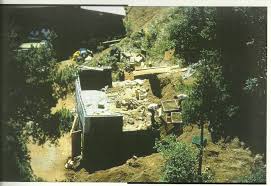A Disease Threatens Montana’s Trout Population
Montana’s scenic rivers have long been a paradise for fly fishers and nature lovers. However, a troubling phenomenon is unfolding, alarming the fishing community. Native fish populations are declining, and diseased, disfigured “zombie” trout are taking their place.
This year, the trout population, especially in the famous Big Hole River, has hit a record low. Biologists and guides blame a disease that makes the fish look like creatures from a horror movie.
Wade Fellin, owner of the Big Hole Lodge, described an infected trout: “I have a video of [someone] netting a fish that couldn’t see out of its left eye and was missing a chunk of its gill plate. It looked like something out of The Last of Us.” Reports indicate these infected fish suffer from blindness, fungal growths, red sores, lesions, and cauliflower fungus.
A Call for Immediate Action
The cause of this epidemic is still unknown, frustrating experts and locals. No unusual diseases or pathogens have been found in the affected trout. Governor Greg Gianforte’s response has been criticized, as calls for a dedicated task force have been ignored, leaving state fisheries with the research responsibilities.
Save Wild Trout, a nonprofit formed by the Fellin family and local guides and researchers, has issued an urgent call to action. They describe the situation in southwest Montana’s rivers as an emergency, urging immediate efforts to prevent a total collapse of the trout fisheries. This requires a thorough study of the declining trout population, identification of the causes, and proactive solutions.
The Role of Climate Change
Climate change is a major factor in the decline of Montana’s trout population. The region has warmed 2.7 degrees Fahrenheit since 1950, more than twice the national average. This warming disrupts ecosystems, affecting key species like the salmonfly, crucial to the trout’s diet. Additionally, warmer waters hold less oxygen, compromising the trout’s health.
Steven W. Running, a professor emeritus at the University of Montana, explains that the West is becoming more arid. Rising temperatures increase evaporation, while precipitation remains the same, leading to earlier snowmelt and depriving rivers of the cold water trout need.
A Glimmer of Hope
Despite the crisis, organizations like Save Wild Trout offer hope. By uniting experts and collecting data, they aim to find solutions to protect Montana’s trout population.





